At first glance, the forehand and the one-handed backhand seem to be completely different tennis strokes. You may find it strange that we can compare them, but it’s important to be aware of the key differences and similarities.
Tennis players often subconsciously assume the strokes should feel similar, especially when one of their strokes is better than the others.
They may try to apply the same ideas from that stroke to a stroke they struggle with.
When players make that assumption, they are usually making a mistake because the forehand and the one-handed backhand have quite a few distinct differences and do not function or feel the same.
So, let’s take a look at 5 key differences between the forehand and the one-handed backhand tennis strokes.
1. The forehand is a looser stroke.
The first key difference between the strokes is that the forehand is a looser stroke, while the one-handed backhand is a firmer stroke.
When players are not aware of this difference, a common problem is that they also play the one-handed backhand in a loose manner since they feel the loose forehand works well for them, yet they will keep struggling with power and control of the one-handed backhand.
There are two reasons why the forehand is a looser stroke:
a) The forehand technique allows for multiple segments working as a kinetic chain, which means the elbow can bend during the hitting and/or the follow-through and the wrist can allow lots of movement of the hand and racket.
As we swing and complete the forehand, we can bend the elbow and move the wrist more, so the forehand can feel very loose and comfortable at the end of the stroke.

Forehand stroke will feel much more comfortable in the follow-through then the backhand stroke.
The one-handed backhand technique does not allow bending of the elbow during hitting or in the follow-through phase. The arm is completely straight, which feels much firmer.
While the wrist does allow movement of the hand, it’s less pronounced than on the forehand side.
b) We start the stroke preparation on both the forehand and the backhand side with the help of the non-dominant hand, which supports the racket. However, on the forehand side, we release the racket much earlier than on the one-handed backhand side.

When the hitting arm is released on the forehand, the backhand still has a long way to go before the release...
That means we have a “free” swinging arm on the forehand much earlier in the stroke, and that allows us to swing the arm much looser than on the backhand side, where the non-dominant hand stays on the racket for most of the swing and releases just a split second before contact.
What tennis players needs to realize is that the one-handed backhand cannot and should not feel as loose as the forehand. They should not be avoiding the firm feel of the one-handed backhand because that’s how that stroke functions best.
2. The forehand is a much more rotational stroke.
If players are not aware that there is way less body rotation on the one-handed backhand compared to the forehand, then they will over-rotate and struggle with control and precision of their backhand.
On a typical forehand stroke (whether in neutral or open stance), the shoulders will rotate around 150 to 160 degrees from start to finish of the stroke. The hips will also rotate a lot in a neutral stance (less in open stance).
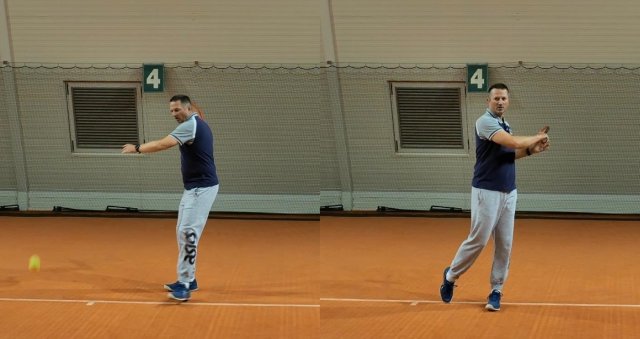
This is how much shoulders rotate on a typical forehand.
But, on a correctly executed one-handed backhand, the shoulders will rotate around 90 degrees from start to finish, which is roughly half of what we get on the forehand side.
The body rotation needs to be stopped for a moment during the hitting phase, as that allows us to swing the racket more linearly for a short while towards the target, which helps us hit the ball more accurately.
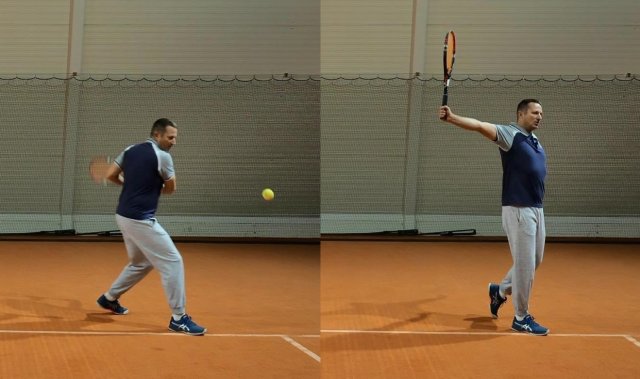
And this is a shoulder rotation on a typical one-handed backhand.
As a result, tennis players should not try to copy the feel of lots of body rotation from the forehand side equally to the backhand side.
They need to be first aware of the technique differences between the forehand and the one-handed backhand before trying to execute the one-handed backhand correctly by stopping the rotation during the hitting phase.
3. We can apply more topspin on the forehand side.
When players don’t know that they can apply more topspin on the forehand compared to the one-handed backhand side, they may try to hit the one-handed backhand with the same amount of topspin that they can produce (and feel!) on the forehand side.
We can apply more topspin to the ball on the forehand side because the wrist allows more hand and racket acceleration on the forehand side. As I previously mentioned, we can also swing the forehand more loosely and therefore faster, which allows us faster acceleration of the racket face across the ball.

Accelerating the hand and racket through the wrist is easier (and stronger) than on the backhand side.
So, one-handed backhands will have less topspin, which is also true on the professional level.
While top pros can apply massive amounts of topspin even with one-handed backhands, if you ever get a chance to see match stats where topspin rate is shown, you’ll notice that it’s always lower compared to the topspin rate of the forehand stroke.
Players should not worry when they hit one-handed backhands with less topspin than their forehands. Rather, they should adjust the speed and targeting of their one-handed backhand so that it’s still consistent even with the lower rate of topspin.
4. The forehand is much more comfortable in open stance.
Players typically discover this difference on their own unless they have been forced to play neutral stance for too long and are not used to open stance forehands.
The open stance forehand is a very comfortable and powerful way of hitting the ball, whereas the open stance one-handed backhand is not comfortable at all. The upper body lacks the leg and hip drive that initiate the stroke.
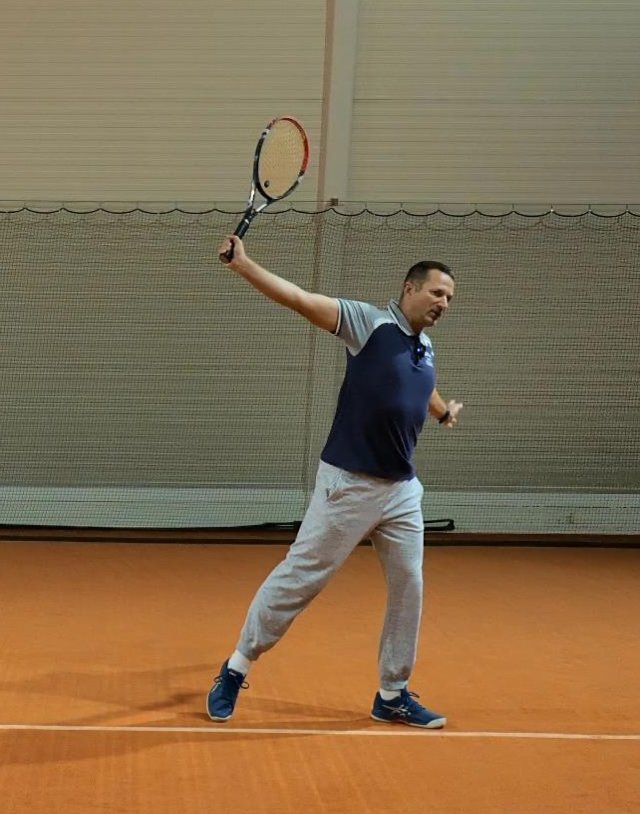
The one-handed backhand is not comfortable in open stance and therefore we don't get effortless power and good control out of it.
While the player can do it from the outside leg, it still doesn’t match the power and control of hitting the one-handed backhand in neutral or even closed stance.
5. The forehand is based on engaging the chest muscles and the backhand on engaging the back muscles.
Players with good forehands use their upper body as one unit, which is achieved partly by engaging the chest muscles during the forward swing as they “unite” the left and right sides of the body.
This action helps the player feel and engage the upper body rotation well, and they also stabilize the hitting arm so that it doesn’t flail around much but stays in the correct swing path.
The problem can arise if these players consciously or subconsciously also try to engage their chest muscles when hitting a one-handed backhand. Doing so results in over-rotation, a lot of mishits and poor control of direction.
The interesting difference with the one-handed backhand is that we need to engage the back muscles especially around the shoulder blades.
My usual instruction is “squeeze the shoulder blades” as the player is completing the follow-through.
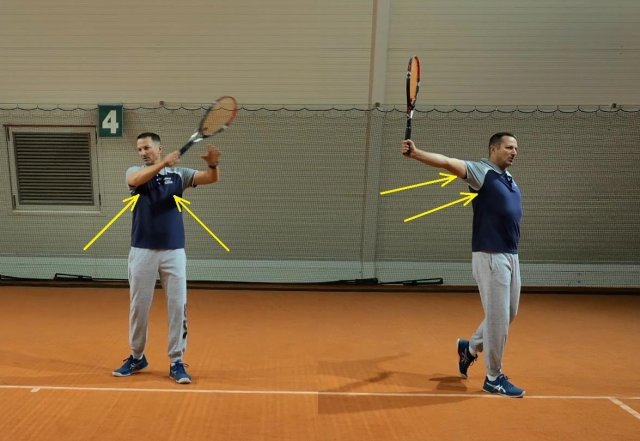
Remember this simple tip: forehand with "front" muscles, backhand with "back" muscles...
When players correctly engage the back muscles on the one-handed backhand, they will not over-rotate and they will be able to hit the backhand with good power and very good precision.
In summary, while the forehand and the one-handed backhand have some similarities (like body rotation and swing), they also have quite a few distinct differences. If the player is not aware of them, they will likely hit one of the strokes with incorrect technique and feeling the stroke poorly.
Once you become clear on the differences and you accept that one tennis stroke does not function and feel exactly like the opposite tennis stroke, then you can better maximize the nuances of each stroke and make them to the best of your abilities.



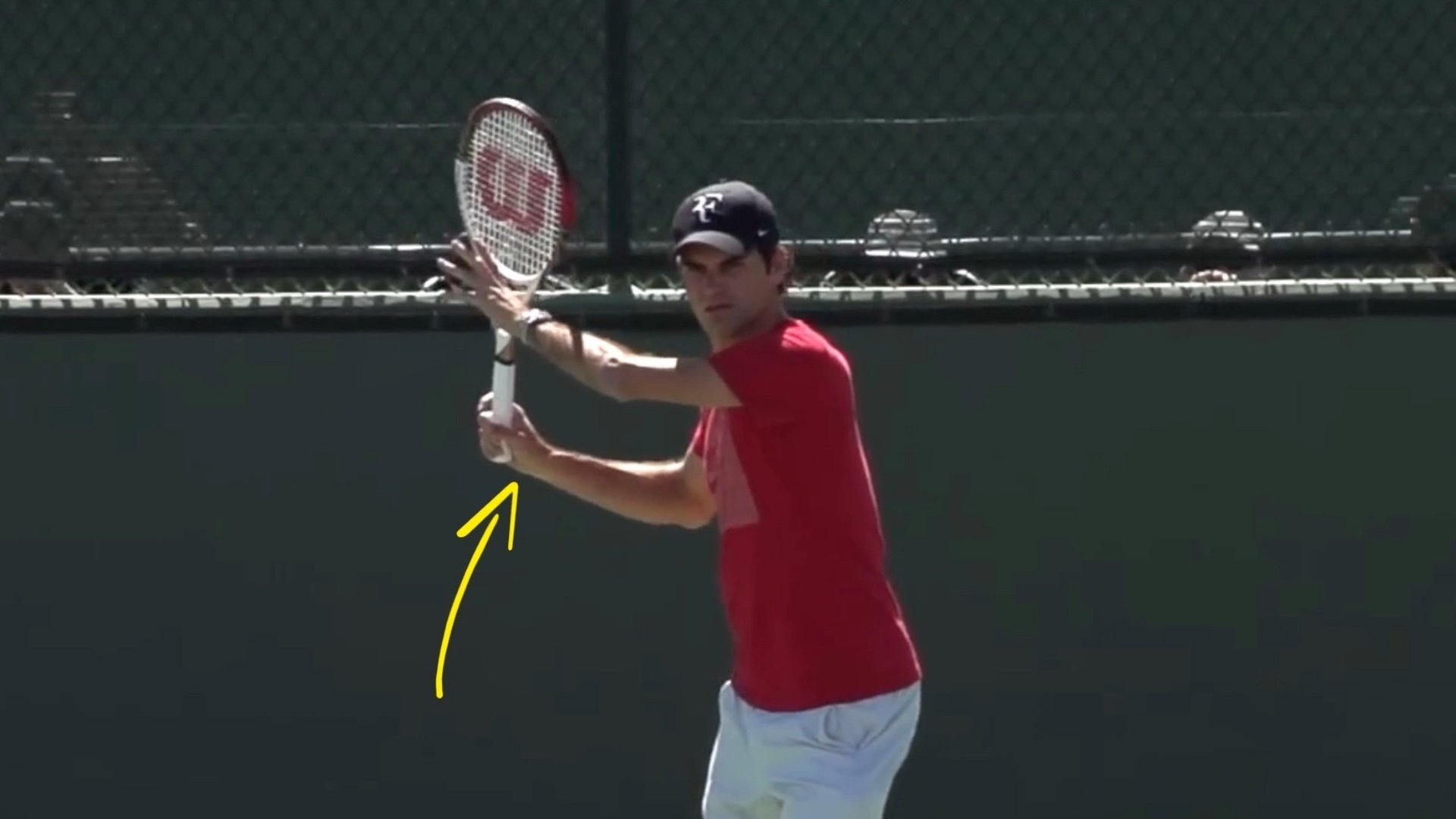

Great tips Tomaz! A lot has been made of the fact that the 1hbh has more topspin than the 2hbh. So the order would be FH > 1hbh > 2hbh for topspin. Is that right?
Yes, Arturo, that’s correct.
Hi Tomaz;
thanks for clear concise instructions on differences between forehand & backhand tennis stroke & topspin.
Aine
Hi Tomaz – excellent instruction, as usual!
Glad it was helpful, Peter!
Great explanation !! Thanks
Welcome!
thank you, it was very clear.
excellent instruction.
I am 66 and have been playing tennis for over 50 years, hitting my backhand much like my (much better) forehand. I finally understand why my backhand has always been my weakness. And, how to fix it! Thank you Thomas!
This is a terrific piece…I love the concept of thinking about chest muscles and back muscles as keys for these strokes. As always I recommend the full video courses…so much detailed guidance and great value for money.
Thank you so much, Tomaz. I had never understood what you are explaining in this article. I read it this morning, this afternoon I tried it on the court: and my backhand is instantly transformed. All my life, I wanted to imitate the forehand. It’s a life lesson too: when you don’t take things for what they are, you wander in the night.
Wonderful, thanks for the feedback, Anthony!